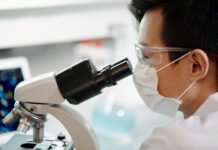“Humanity has not put a price on pollution at the level that we need to. The entire planet knows we need to have a clean energy transformation in the immediate time. That’s just a fact.”
Quantum mechanic Alán Aspuru-Guzik is researching how to make that transition to renewable energy sources. He is the principal investigator of the Matter Lab at the University of Toronto and is cross appointed to both the Department of Chemistry and the Department of Computer Science.
“Consider the past century was a century of discovery without thinking about the bounds that we have,” adds Aspuru-Guzik.
“We were fishing and didn’t realize that the fish were going to run out. We were polluting without thinking about how much plastic we were going to be dumping in the ocean. We were burning fossil fuels without feeling too much the impact.”
Despite that, Aspuru-Guzik recognizes that we invested in innovation that has brought humanity to one of its greatest levels of wealth. But that innovation came at a cost, and we are now facing major problems with human-induced climate change threatening ecosystems and triggering extreme weather events all over the planet.
“If there was political will, we do have enough technology to ride the storm of climate change,” says Aspuru-Guzik. “For example, in the field of solar, in the field of windmills, we’re ready. We could have a transition really quickly.”
But there are still gaps to fill to get a steady power supply because most forms of renewable energy are intermittent.
“Once the sun stops shining or the wind stops blowing, you stop making energy from solar or wind,” says Govind Kumar, a master’s student at the Matter Lab. “If we are going to power society entirely on renewable energy, it’s necessary to store that energy.”
Aspuru-Guzik and Kumar are working on redox-flow batteries, which can scale all the way up to power grid-scale applications like entire cities. These batteries use dissolved ions to store and produce energy, but at the moment they use metal ions like vanadium. That makes them too expensive to scale up, so an alternative ion is needed.
“What we aim to do in this group is to replace metal ions like vanadium with organic molecules,” explains Kumar. “Ideally, we’ll find a really good candidate which would then be able to power homes across the world.”
We’ve made incredible technological progress, but we need to start thinking about the boundaries of our planet because our lifestyles are not sustainable. Pollution is already compromising human health, devastating our ecosystems, and bringing our youth into the streets in protest. Energy storage is urgently needed to help implement renewable energy now.








































